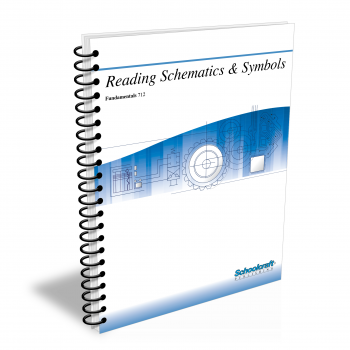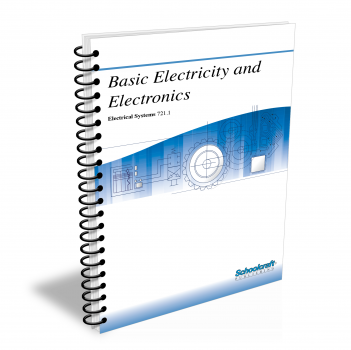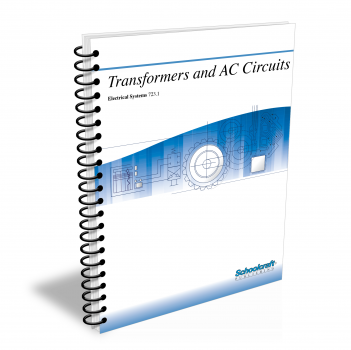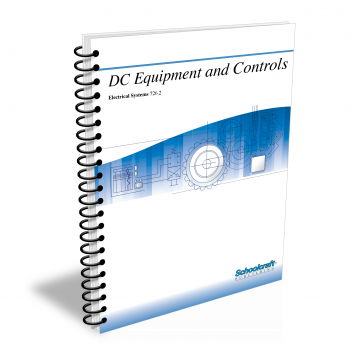AC Control Equipment
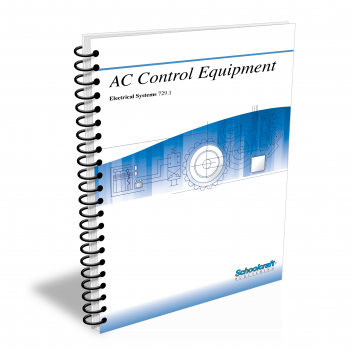
Course Number: 729.1
The AC Control Equipment textbook covers the broad range of industrial motor starting and control equipment, including NEMA sizes and ratings. Includes pushbutton control stations, limit switches, mercury switches, mechanical and magnetic plugging, foot switches, and pressure, temperature, and float switches. Covers control panel wiring and special applications.
Does your curriculum require additional topics not included in this textbook? Build a customized version of the AC Control Equipment textbook below.
This textbook has been recently updated
to include topics lists, objectives, & key terms for every chapter.
Recommended Contact Hours – 15
Preview a Chapter
Available Supporting Material
- Table of Contents
- Exam Copies
- Suggested Titles
Table of Contents
Chapter 1: Motor Starters
Topics: Motor controllers; Controller enclosures; Starters; Magnetic controls; Interlocks, Reversing and combination starters
Learning Objectives:
- Describe the difference between a manual starter and a magnetic starter.
- Explain the function of a shading coil in a magnetic starter.
- Explain the effects of low voltage on a controller.
- State the reason why holding-circuit interlocks are required on magnetic starters and contactors.
Chapter 2: Switches and Controls
Topics: Pushbuttons; Selector switches; Wall boxes; Contact blocks; Indicating lights; Circuit diagrams; Legend plates
Learning Objectives:
- Discuss the characteristics of industrial switches and controls.
- Identify the five most commonly used NEMA pushbutton stations.
- Demonstrate how to mount an oil-tight control station both vertically and horizontally.
- Explain the difference between standard and press-to-test indicating lights.
- Explain how a three-wire control circuit works.
Chapter 3: Limit Switches
Topics: Precision snapswitches; Limit switches; Mercury-tilt switches; Switch installation and failure
Learning Objectives:
- List the main parts of a precision snap-action limit switch.
- Describe the contact arrangement of a snapswitch.
- Describe the kinds of actuators used in limit switches.
- List the rules for the proper design and application of limit switch cams.
- Explain how a mercury switch works.
Chapter 4: Special Control Switches
Topics: Reversing drum, foot, transfer, plugging, mechanical, magnetic plugging, pressure, temperature, and float switches
Learning Objectives:
- Explain how a drum switch works.
- Select the best switch for stopping a motor quickly.
- List the criteria for selecting a plugging switch.
- Identify different types of pressure switches.
- State the definition of pressure differential.
Chapter 5: Timers and Counters
Topics: Interval and reset timers; Time-delay relays; Repeat-cycle, pulse, and percentage timers;Impulse, electric, and revolution counters; Time totalizers
Learning Objectives:
- Explain how a reset timer works.
- Describe the different types of timers.
- Compare and contrast an electric counter and a time totalizer.
- Select the best control device for use where a machine cannot be controlled by time.
- Demonstrate how to set up a chart for a programed control circuit.
Chapter 6: Control Relays
Topics: Contact operation; Mountings, enclosures, terminals, and definitions; NEMA classes; Causes of failure
Learning Objectives:
- State the definition of a relay
- Explain the function of relay contacts.
- Select the best relay for use where large movement of the contacts or high contact force is required.
- List the advantages of a reed relay.
- Tell why industrial relays usually have double-break contacts.
Chapter 7: Equipment for Hazardous Locations
Topics: Enclosures; Sources of ignition; Switchgear and industrial controls; Lighting; Motors and generators; Plugs and receptacles, Portable equipment; Conduit
Learning Objectives:
- List the requirements an enclosure must meet in order to be called explosionproof.
- List the characteristics of switchgear and industrial controls-in hazardous conditions.
- List three situations in hazardous locations that require the use of seals.
- List the three basic conditions that can cause fire or explosion.
- Demonstrate how to terminate armored cable that enters an explosionproof housing.
Chapter 8: Special Motor Controls
Topics: Synchronous motor control; Sequence-accelerating and decelerating relays; Transformer starters
Learning Objectives:
- Name the two relays required for automatic starting of a synchronous motor.
- Explain how an automatic sequence-accelerating relay works.
- Select the best starter for use where the highest possible starting torque per ampere of line current is required.
- List the characteristics of different types of resistance starters.
- Describe a Y-delta starter.
Chapter 9: Motor Control Centers
Topics: Features and advantages; MCC bus; NEMA standards; Enclosure construction; Wiring; Circuit protection; Installation
Learning Objectives:
- Define the term motor control center.
- Name the main advantages and disadvantages of back-to-back MCC construction.
- Explain how to install an MCC.
- Define a note, a caution, and a warning as each relates to MCC equipment.
- List the checks to conduct prior to releasing an MCC for plant operation.
Chapter 10: Control Panel Wiring
Topics: Enclosures; Terminal blocks; Wire identification; Connections; Connectors; Wire dressing
Learning Objectives:
- State the function of terminal blocks.
- Demonstrate how to make a terminal connection.
- Tell when to use different types of connectors.
- Describe the proper lacing of wires in a control panel.
- Explain when and how to use a wiring duct.
Request Exam Copies
Exam Copies
Ready to see a copy of our textbooks? After selecting which textbooks you’d like to review for your course, you can submit your request by either logging in or creating an account so we know where to ship your exam copies. A representative from Schoolcraft will contact you to confirm and finish processing your request.
Exam copies are always free and yours to keep.
Selected Exam Copies
none selected
* Maximum of five copies can be ordered
